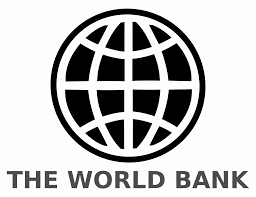February 07 2020

The international financial institution’s latest estimate, in its January 2020 edition of “Global Economic Prospects,” has been revised from its 4.2 percent projected contraction in the June 2019 edition of the report. So Iran performed more than twice as badly as projected just last summer.
The International Monetary Fund, located across the street from the World Bank in Washington, DC, last June projected the Iranian economy would contract by 9.5 percent in 2019. It expects zero growth this year. The IMF has not yet updated those figures.
The World Bank’s forecasts for Iran’s GDP growth are 0 percent in 2020 and 1 percent in both 2021 and 2022.
The 2020 forecast has been revised down to zero from growth of 0.9 percent in the June 2019 edition. The 2021 forecast indicates no change compared to the previous report.
The World Bank report shows Iran’s economy contracted by 4.9 percent in 2018 after experiencing a 3.8 percent growth in 2017, the last year Iran enjoyed any growth.
The World Bank report covers 132 of the world’s 193 countries. It excludes the many island mini-states in the Caribbean and Pacific, plus some countries for which reliable economic data is difficult to obtain. One of those countries is Venezuela, whose economy has entered a disaster and which would undoubtably show even worse results than Iran.
Of the 132 countries analyzed, only 12 were reported as having contracting economies and only two of those contracted by more than 5 percent—Iran at -8.7 percent and Zimbabwe at -7.5 percent.
The contraction of Iran’s economy in 2019 was mainly due to the collapse of oil exports as a result of US sanctions.
The oil sector decline, coupled with international trade and capital flow restrictions, has negatively influenced economic activity in key non-oil sectors, including auto, machinery and construction sectors, which have faced supply chain challenges and higher operational costs, the report said.
In August 2019, Iran’s housing sector registered the lowest volume of sales in six years while prices rose by around 78 percent year-on-year. Unusual shocks hitting the economy in 2019 include such things as floods that have impacted much of the country since just before Now Ruz.
The World Bank expects the budget deficit to further widen to 5.6 percent of GDP in the current Persian year as more than 30 percent (and as high as 63 percent in 2002-03) of the government budget is sourced directly from the sales of oil and gas.
The baseline assumption for the medium-term rests on oil exports of around 500,000 barrels per day on average. That is just 20 percent of the normal export levels for the quarter century before sanctions.
In the coming years, the effect of the recent large exchange rate depreciation could allow the country’s goods and services to become more competitive regionally and help close the expected current account deficit gradually, the World Bank said.